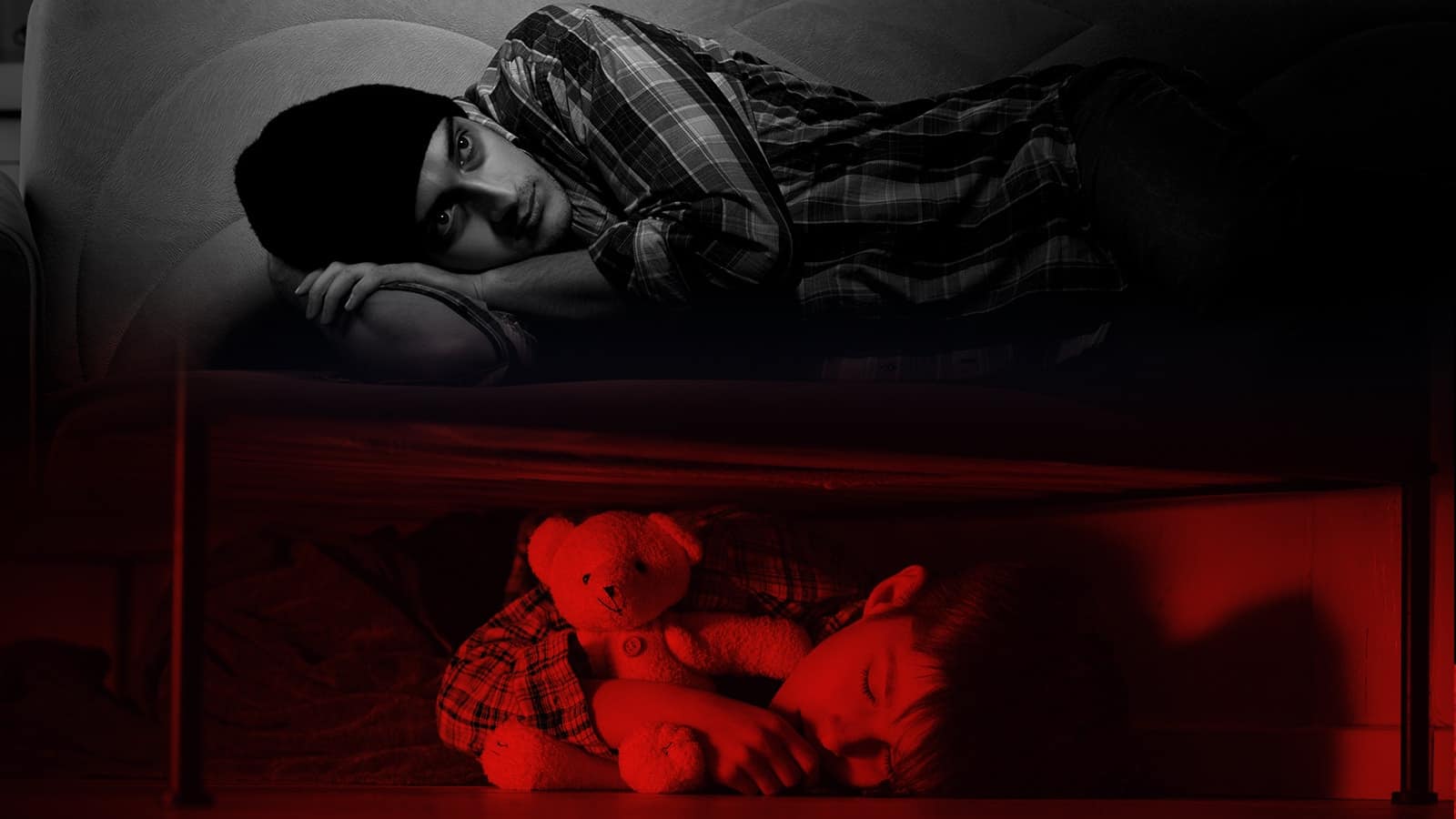The fact that childhood trauma – and the events that cause it – so prolifically exists is a tragedy. The fact that childhood trauma is so misunderstood, even by those responsible for the oversight of our social institutions is also a tragedy; this includes our law enforcement and criminal justice system.
Most people remain ignorant to the fact that childhood trauma, if not addressed, extends beyond childhood. This is also heartbreaking. Hence, the reason for this article. Besides the seven hidden ways that childhood trauma affects you as an adult, we’ll go over other critical issues, including:
- The state of affairs as it pertains to childhood trauma
- What’s being done about the increasing numbers of traumatized children and what needs to change.
Finally, we’ll wrap things up by discussing how you can help prevent childhood trauma.
What is Childhood Trauma?
“The experience of an event by a child that is emotionally painful or distressful, which often results in lasting mental and physical effects.” – The National Institute of Mental Health: definition of childhood trauma (source)
Childhood trauma occurs when a child experiences or observes negative events during childhood. Due to the impression (e.g. shock) of the event, the child develops psychological trauma.
Interpersonal trauma is that which originates in the child’s relationships. Examples of interpersonal trauma include emotional, physical, or sexual abuse; experiencing or witnessing violence within the family or at home, and experiencing or witnessing violence in a community (e.g. civil disturbances, armed conflict, asylum seeker trauma.) A child who is emotionally and/or physically neglected may develop trauma.
Trauma may also stem from a caregiver or parent trauma. Examples of this include:
- A parent who is incarcerated
- A parent who abuses alcohol or drugs
- Parental ill-health
- Parental separation (e.g. divorce)
Trauma may also be caused by natural disasters such as earthquakes, floods, or hurricanes; an act of violence (e.g. mass shooting or terrorist attack), and in other life-threatening conditions like a motor vehicle accident.
The ‘ACE’ Study
“We found a strong … relationship between … exposure to abuse or household dysfunction during childhood and multiple risk factors for … the leading causes of death in adults.” – Felitti, V.J., Et. Al (source)
According to the ‘ACE’ study, there are ten different types of childhood trauma across two categories: personal and environmental. Trauma of the personal type includes emotional neglect, physical abuse, physical neglect, sexual abuse, and verbal abuse. Environmental trauma relates to family members and includes having an alcoholic parent, living with a mentally ill family member, having a mother that is the victim of domestic abuse, or the absence of a parent following abandonment, death, or divorce.
The Centers for Disease Control and Prevention (CDC) finds that children who experience Adverse Childhood Experiences, or ‘ACEs,’ are more likely to become future victims or perpetrators of violence. Researchers also found a strong correlation between ACEs and:
- Disrupted neurodevelopment
- Social, emotional, and cognitive impairment
- Adoption of health-risk behaviors
- Disease, disability, and social problems
- Early death
How Trauma Manifests Into Adulthood
“Our study (suggests) that childhood trauma casts a long and wide-ranging shadow … (including) important domains of functioning.” – Copeland, W.E., Et. al (source)
As the ACE study demonstrates, psychological trauma experienced during childhood continues to affect the victim. Here are seven of the many “hidden” ways that trauma affects you as an adult:
1. Anxiety and Depression
Studies show that the brain of an adult who experiences trauma during childhood differs from that of an adult who does not. Per a study published in the journal Proceedings of the National Academy of Sciences, the brain images of adults with a history of childhood trauma show “scar of prior trauma … in functional dysconnectivity.” These abnormalities appear to correlate with wide-ranging symptoms of major depressive disorder or MDD.
Other networks of the brain impacted include multiple areas of the resting-state network (RSN), attention and sensory systems, and the default mode network.
2. Substance Abuse
A probable link exists between the stress levels experienced during childhood and those experienced in adulthood. Maltreatment of a child heightens their reactivity to adverse stimuli. Over time, these responses may cause long-term changes in the brain’s neural networks. A stress response that is easily triggered makes one susceptible to alcohol and drug dependency, as is seen in adult victims of childhood trauma.
3. Social Difficulties
It stands to reason that victims of childhood trauma. That’s because those whose trauma stress from maltreatment like bullying, neglect, or physical abuse, have trouble in their relationships. We see these difficulties in common adult behaviors such as fear of commitment, separation anxiety, and social anxiety. Per a study published in the Journal of Trauma and Dissociation, “… a significant relationship [exists] between [childhood] trauma history [and] all aspects of social functioning.”
4. Health Problems
As explained in the ACE study – and repeated again here – adult victims of childhood trauma are probably at a higher risk for multiple health problems. These ailments include cancer, heart disease, obesity, stroke, and others. Additionally, mental health problems include anxiety, depression, post-traumatic stress disorder (PTSD), and suicide.
5. Lost Opportunities
A link exists between victims of childhood trauma and career satisfaction, median income, and education levels. It appears that such adults have trouble with achieving or setting life goals long after their childhood has ended. Possible reasons for this include lack of adult guidance, cognitive underdevelopment, and poor socioeconomic conditions during childhood.
6. Low Self-Esteem
Emotionally neglected children will not receive the self-esteem that they require of their caregivers or parents. As a result of this neglect, the child will grow up with a poor self-image and a skewed sense of self-esteem. If not corrected via psychological intervention, self-care, or some other means, it is probable that the individual will live their entire life with a false sense of self. Tragic, indeed.
7. Lack of Direction
A child who isn’t given direction by anyone will probably develop into an aimless adult. In fact, many smart and talented people who “waste” these traits never had a good role model or even a basic knowledge of their world. So how can we expect such poor souls to live to their potential?
Preventing Childhood Trauma and Seeking Help
As adults, we should take it upon ourselves to help children who may be suffering. In this regard, recognizing potential signs of trauma in children and adolescents is a critical part of prevention. Common childhood responses to trauma are classified according to three age groups: five and younger, six to 11, and 12 to 17.
Children at or below five years may:
- Be excessively tearful or have crying fits
- Cling to caregivers or parents
- Complain often of headaches, stomachaches, or other physical symptoms
- Display extreme irritability
- Return to bed-wetting or thumb-sucking
- Throw temper tantrums
- Reenact the traumatic event during play
Between six to 11, children may:
- Be unable to concentrate
- Complain often of headaches, stomachaches, or other physical symptoms
- Develop irrational fears (e.g. dying)
- Distance themselves from family and friends
- Experience sleep problems (e.g. inability to sleep, refusing to go to bed)
- Have trouble with school and schoolwork
- Lose interest in once-enjoyable activities
- Spend a disproportionate amount of time alone
At the ages of 12 to 17, kids may:
- Become angry or resentful
- Complain often of headaches, stomachaches, or other physical symptoms
- Lose empathy for others
- Experience sleep problems
- Lose interest in activities
- Refuse any type of help for any personal problems
- Use or misuse of alcohol, drugs, or tobacco
You can take the ACEs assessment for free here. Indeed, this is an outstanding resource for adult victims is the International Society for Traumatic Stress Studies or ISTSS. On the organization’s homepage, you can find the following:
- Trauma assessment tools
- Options for treatment
- Education and research
- Meetups and events


















